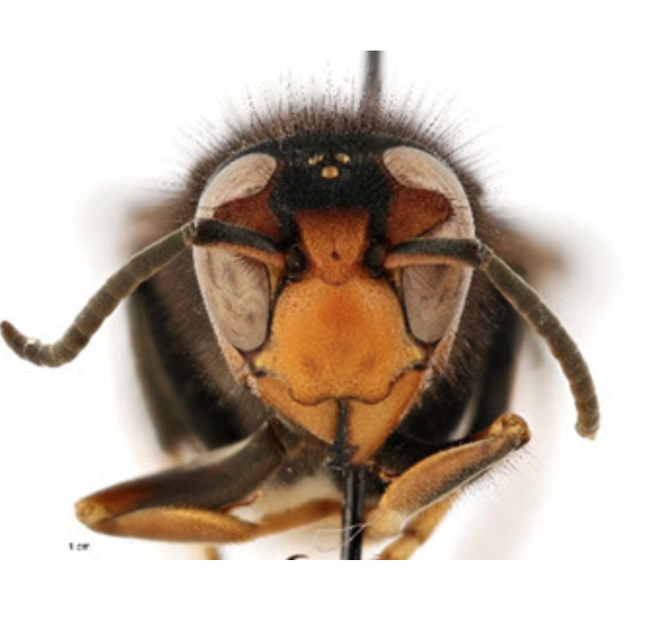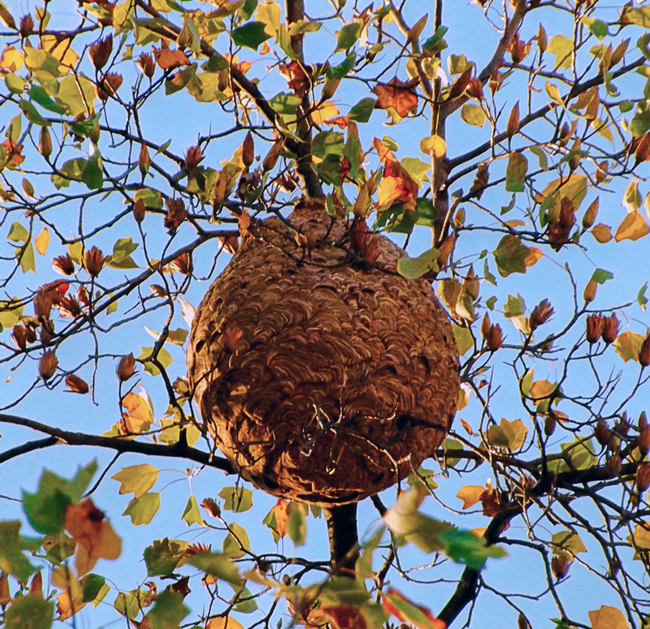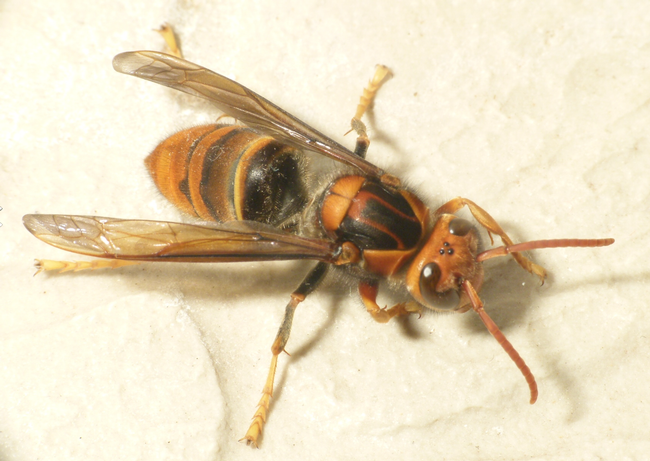
It's about this yellow-legged hornet detected in Savannah, Ga., the first live species of Vespa velutina reported in the United States.
UC Davis distinguished professor Lynn Kimsey, director of the Bohart Museum of Entomology, and the 2002-24 president of the International Society of Hymenopterists told us late last week: "This isn't the murder hornet. It's a slightly smaller species--Vespa velutina. It's about the same size and I think biology as the already established Vespa crabro, which has been in the southeastern U.S. for more than a century. Anything is possible as far as introductions go, but I think it's unlikely that it could establish since it is also native to regions with wet summers. I suspect it got into Georgia through one of the ports. Hitchhiking in/on cargo containers is too easy. Savannah takes in an estimated 4.5 million cargo containers annually. Its actually astonishing that more things don't make it in."
Kimsey, known for her expertise on wasps and other Hymenoptera, is accustomed to fielding questions from the news media. Praveena Somasundaram of the Washington Post interviewed her for an Aug. 18 piece, Invasive Hornet with "Reputation for Targeting Honey Bees Seen in U.S.

Though it is too early to tell how the yellow-legged hornet was introduced and whether it will be able to establish itself in the ecosystem, its presence in the state could have a “potentially huge” impact on Georgia's beekeepers, said Lynn Kimsey, an entomology professor at the University of California at Davis.
Bee colonies could be at risk if more yellow-legged hornets are found in Georgia. A honeybee colony is “basically a giant waffle of protein” for yellow-legged hornets, Kimsey said.
“There's so much food there,” she said. “So for a colony of these big hornets, honeybees would be fair game, and that's their reputation.
The Smithsonian Magazine, one of the first to call attention to the insect, headlined its news story, "Invasive Yellow-Legged Hornet Spotted in the United States for the First Time," and added a subhead, "The insect, detected in Georgia, can snatch bees from the air while hunting, posing a threat to native pollinators and agriculture."
The Georgia Department of Agriculture posted on its website: "The yellow-legged hornet poses a threat to honeybees and other pollinators in our state. These pollinators play a significant role in Georgia's agriculture industry, the state's main economic driver, and it is imperative that these invasive pests are tracked and eradicated. We are working with USDA APHIS and UGA to trap, track, and eradicate these pests and will continue to assess the situation as new information becomes available and allocate additional resources as need."
The insect, native to Southeast Asia, was accidentally introduced to Europe, Japan and South Korea. It was first detected in France in 2004--probably arriving in pottery boxes. It then became established throughout most of Europe. The hornets build egg-shaped nests.
According to Wikipedia, the hornet "significantly smaller than the European hornet. "Typically, queens are 30 mm (1.2 in) in length, and males about 24 mm (0.95 in). Workers measure about 20 mm (0.80 in) in length.[2] The species has distinctive yellow tarsi (legs). The thorax is a velvety brown or black with a brown abdomen. Each abdominal segment has a narrow posterior yellow border, except for the fourth segment, which is orange. The head is black and the face yellow."
In its native range, the hornet mainly hunts Apis cerana, the Eastern honey bee. Bees there suffocate the hornet by balling it.
Will the Western honey bee, Apis mellifera, be able to cope if the yellow-legged hornets become established? The threat is real.
Attached Images:

The egg-shaped nest of a yellow-legged hornet, Vespa velutina. This 33 feet high on a Liriodendron tulipífera and identified in November 2015 at the Plaza Pedro Nunes, Porto, Portugal. It became visible when autumn leaves fell. (Photo by Paula Jorge, courtesy of Wikipedia)

The yellow-legged hornet, Vespa velutina. (Photo courtesy of Wikipedia)